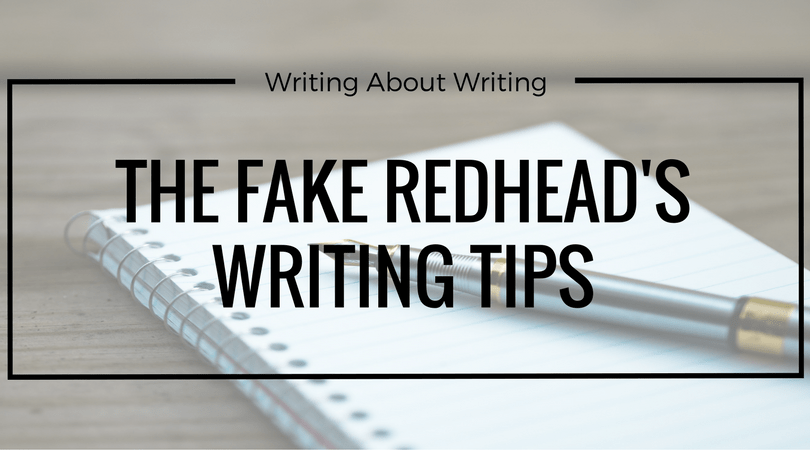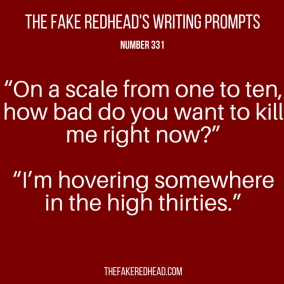Writing Tips | Find Your Next Favorite Book | Prompt Library | Shop The eBooks
Foreshadowing Is Awesome
Foreshadowing is, hands down, one of my favorite things to include in my writing.
Hands, freaking down.
Why?
Well, first things first, let’s talk about heroes.
Now, I don’t mean heroes in general, or heroes like the ones in the #WhoIsTalyaNightingale novel. No, I mean 2006 television phenomenon, Heroes, you know, the show that launched Hayden Panettiere’s career.
#SaveTheCheerleaderSaveTheWorld
And when I talk about Heroes, I’m only talking about Season One. Don’t get me started on Season What’s-Her-Face-Who-Kills-People-When-She-Cries or Season Ruined-By-The-Writer’s-Strike (which I understand was a thing that happened and the WGA can and SHOULD fight for their rights) or whatever hell happened on the show after that.
And I’m REALLY not talking about the attempt at the reboot. I wanted it to work out. I wanted it to be good. But alas, nope. #YouTried…Well…Kinda.
Not really. Oh gosh, the execution was so lacking on that one.
Anyway.
One of the most entertaining parts about Season One, for ME, was that I could predict what was going to happen for pretty much every single major plot point the moment it was foreshadowed.
No, I’m not physic (even though there are PLENTY of people out there who think I am), but there was just something about how that show was written that, before a thing would happened, I’d call it out.
Every. Single. Time.
And while most people aren’t fans of that kind of life, we all know how much I like reading to the end to figure out if I’m going to possibly like a story. I’d rather have the challenge of figuring out what’s going on that be caught off guard.
It’s a thing. I’m super unique.
Anyway, click the Continue Reading button for some fundamentals on what foreshadowing IS and IS NOT, and three reasons why it’s awesome and you should use it in your writing.
What Foreshadowing IS
Foreshadowing is a thing called a literary device. What are literary devices? Basically, they’re the technical terms for the elements that make up a story. Even if you don’t know what any or all of them are, you use them every time you write.
In this case, foreshadowing is when a writer gives an advance hint of what’s to come in a story. It lends an atmosphere of anticipation and suspense to the story, which urges your readers to turn the page.
It’s a preview that doesn’t necessarily come off as an overt preview.
And it’s used in two steps: the setup and the payoff.
It shouldn’t have to go with much saying that the setup happens early on in the story, and the payoff is that moment where your readers have the, “A ha!” Moment at the end of the story when it all comes together.
That’s also can be the, “I freaking new it!” Moment.
Or the, “Wait…” flips back a hundred pages. “Holy crap, that was that thing!” Moment.
What Foreshadowing Is NOT
Foreshadowing is not broadcasting at the top of your lungs that something is going to happen. It’s an allusion (which is yet another literary device), it’s a breadcrumb.
You’re preparing your readers for something (maybe good, maybe bad, but ALWAYS important) to happen later on in the story. Preparing.
It’s like you’re going on a trip and you’re packing a bag for your reader, with piece of a puzzle that’s not going to click completely until they get to the airport. Like, if you’re packing a bikini, you’re giving you’re reader the impression that they’re going somewhere with a pool. But is it a pool? Is it a lake? Is it an ocean? Is it somewhere tropical? Or is it somewhere on the cape?
See: you’re giving them pieces, but it’s not until they get to the airport (which, in this metaphor, represents the climax of the story) and see WHERE they’re going until they get the full picture.
Speaking of airport metaphors, I had a dream that I was flying to California but for some reason missed my flight, but the airport in Arizona was on the beach so I worried more about Instagraming the coastline than rescheduling my flight. But also, why would I be flying from Arizona to California when I could just drive, since that’s what non-dream Kathryn does?
Dreams are weird, man.
But hey, maybe this is FORESHADOWING that I’m going on a trip soon.
That would be cool.
Foreshadowing, Why You Should Use It
1 Misdirection
Foreshadowing can be a great way to kindly misdirect your readers away from whatever aspect of the story that you’re trying to hide. We can’t all be like William Shakespeare, who screams to the rooftops how Romeo and Juliet are going to kick their respective buckets by the end of the story.
Ever heard of the concept of the “Red-Herring”? That’s a literary device too, especially in mysteries. Say you’ve got an investigation and answers keep heading straight in the direction of a really shady character. BUT, in this case, the shady character is shady, for funsies. Always remember that you CAN have characters who are secretive just because, fundamentally, they’re like that. And if you choose to give this character a fancy backstory, you can explain why they are the way they are.
2 Confusion
Foreshadowing is a great way to confuse your readers.
It’s very much like misdirection, but with the added element of extra obstacles where the reader never knows what’s going to happen next because they’re on such a wild and crazy adventure.
While you want to give your readers an overarching idea of where the story is going to go, you don’t want to give away your endgame. Make your readers think that something that ISN’T the endgame, IS. Whether that’s a final type battle or confrontation, or a major accident or death or the complete reversal. Or maybe the relationship that you THINK your readers is going to get ISN’T what they do get.
See: Luke, Leia, and Han.
Nuff said.
Just make sure that whatever it is you’re doing, it’s NOT what your reader THINKS it’s going to be in the end.
3 Easter Eggs
Now this is my favorite form of foreshadowing, and WHEN I get the chance to write all the stories in the #WhoIsTalyaNightingale universe (which, TBH, is like twelve stories), you’ll see the way I weave elements and bonuses and tiny little pieces of other storylines and soon-to-be relevant side characters and events.
It can be anything: random names mentioned in a list where one becomes super relevant later on in the story, or a news report about something that eventually becomes important (or always was important, we just didn’t know yet), or a conversation about a person who is only mentioned once in one story but becomes a major protagonist in another.
It’s awesome. I have so many ideas (hence why I also have so many writing prompts. As of today, including the ones I’ve posted, yet to post, and others that are soon to come in different forms, I have nearly a thousand.
That’s a lot of prompts.
Check Out The Last Writing Tip Check Out The Next Writing Tip
Shop The eBooks | Find Your Next Favorite Book
Want more prompts? Check out the Prompt Library.
Do you have a question about writing that you want me to answer? Leave a comment below! (I’m also answering questions in the Facebook group. Hop on over and say hi!)






